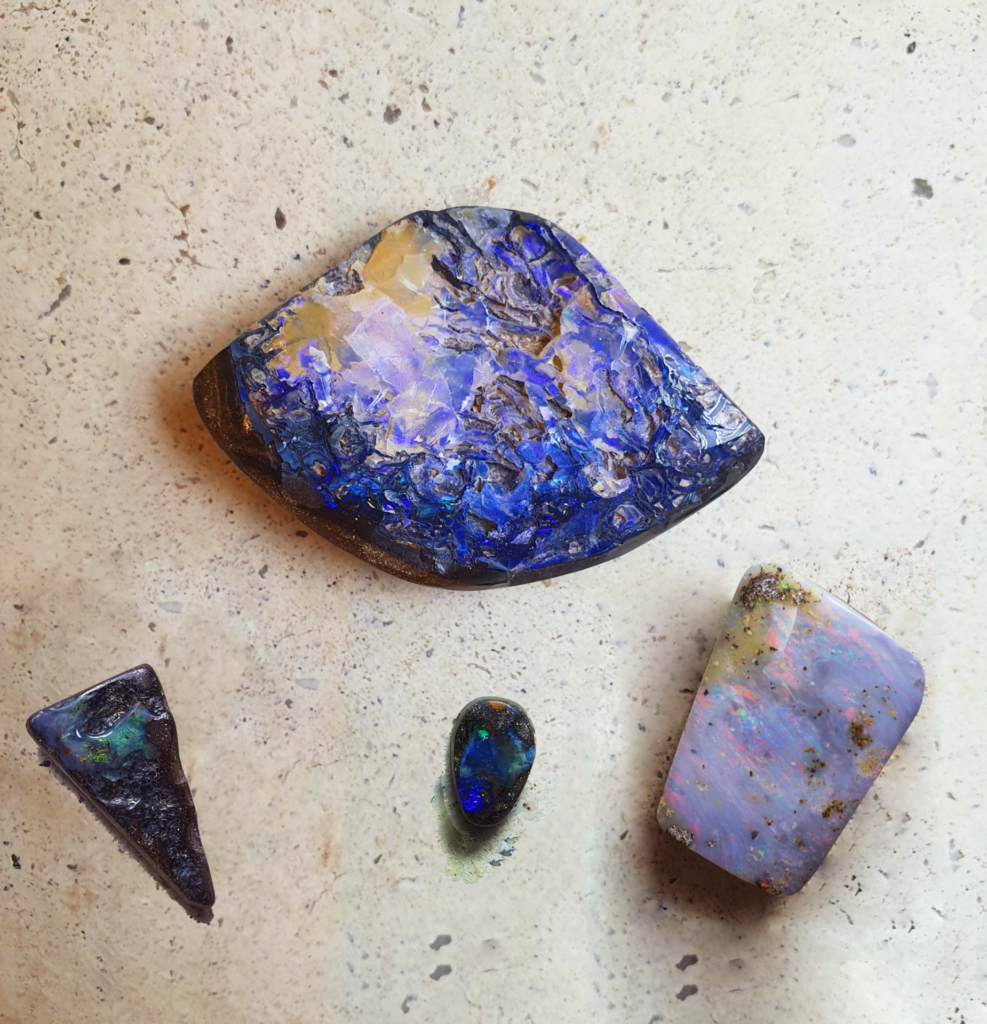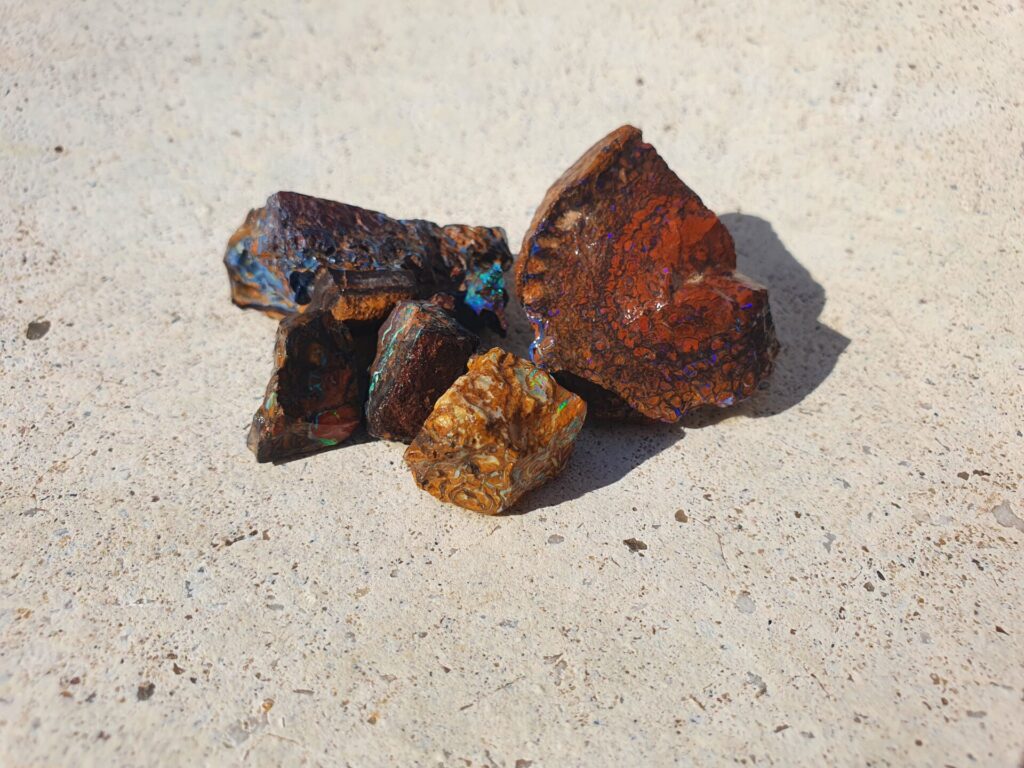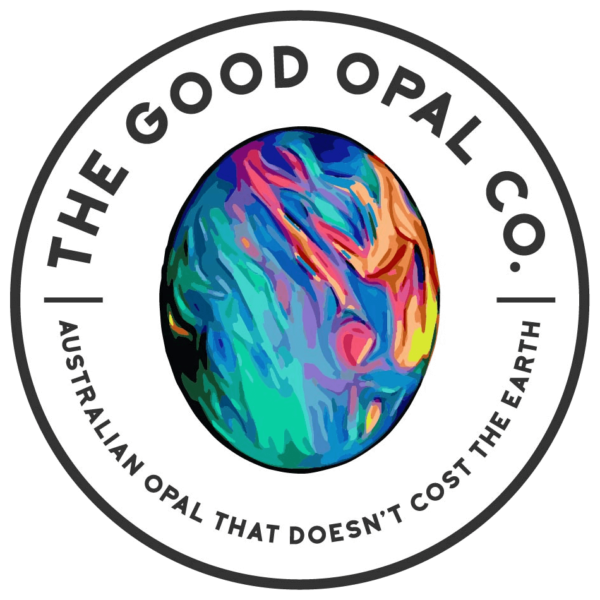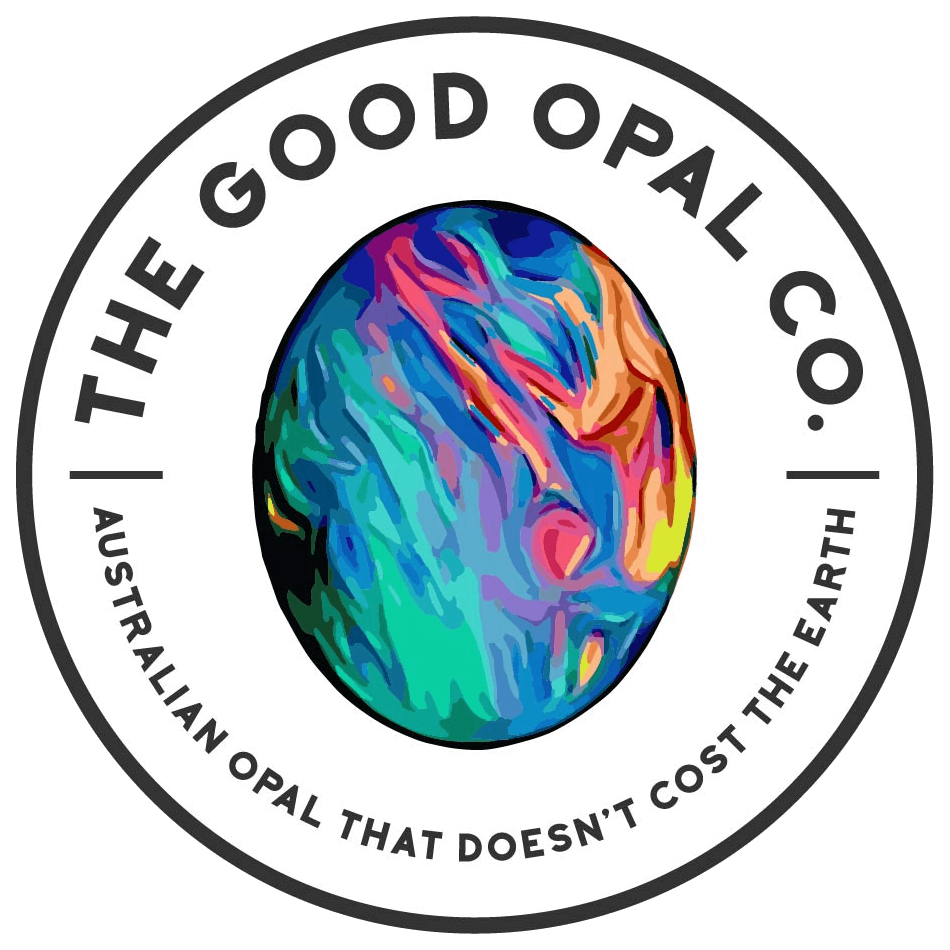At The Good Opal co. quality matters.
Boulder Opal is one of our favourite types of opal here at The Good Opal co, because of their rich colour and unique formation. Boulder opals are only found in Queensland, Australia. Primary opal fields include Winton, Opalton, Quilpie, Yowah, Eromanga, Cunnamulla, and Longreach.
They are easily distinguished by their layer of solid brown ironstone left on the back of the stone. As the name suggests, are mined from large ironstone boulders under the ground. Unlike opal mined in Lightning Ridge, Boulder Opal is often mined via open cut mining technique using an excavator.


A little bit of history…
The stones are more commonly cut in freeform shape to best showcase the veins of colour to be on top of the stone. The ironstone backing is what makes the opal naturally vivid and the colour so vibrant, creating what is often referred to as being a natural doublet.
The ironstone in boulder opal is often visible on the surface, often effecting the overall appearance of the opal. This reduces the value of most boulder opals, making boulder opal free of ironstone very rare and highly valued. This is why Boulder opal is the second most valuable type of opal.
Due to the significant weight different in iron stone vs sandstone, valuing this type of opal per carat is not common practice and not a proper indicator of a boulder opal’s value unless ironstone is not present in the piece. These pieces can fetch up to $15000 USD per gram.
Boulder opal forms brightest and most valuably within cracks and fissures in these boulders. However, due to the difference in how boulder opal is formed, there are a variety unique boulder opal patterns that are highly prized, such as:
Koriot opal/ Yowah nut: precious opal formed in siliceous ironstone nodules and ripples of colour. Opal Matrix: opal formed in the infillings of pores or holes between grains of the host rock in which it was formed. Matrix opal is also formed in Andamooka. However, Andamooka matrix opal is formed within limestone. Andamooka matrix opal is regularly treated to darken the colour of the host limestone creating a darker host rock, therefore highlighting the sparkles of opal within.
Formation
Of all gemstones, when opal was formed through cervices in the earth filling with silica rich water 100 million years ago, silica deposits were left behind. These deposits are spherical, and it is their stacking— layer upon layer—that creates gaps between the spheres. When the light passes through the spheres and their gaps, it splits like a rainbow from a prism. The result is the stunning patterns and displays of colour we see in opal.
Boulder Opal is unique to the eastern shore of the ancient inland sea with vibrant colour being found in seams which can be cleaved apart on their natural fault lines to reveal faces of opal ( https://gem-a.com/gem-hub/gem-knowledge/understanding-boulder-opal ). Thus, it forms a little differently to its interstate brothers and sisters; rather than silica rich water becoming trapped in faults in the earth, boulder opal forms within the concretion of the ironstone itself. This process very commonly forms thin veins of colour.
Because of this, opal cutters need to leave the ironstone on the back of the opal to form a full sized stone. The thin layer of opal in boulder opals can display any colour of the spectrum in a beautiful play of colour.
Shop these opals in store at https://www.goodopalco.com/product-category/opals/boulder-opal/. Or if you’d like to create a custom boulder Opal parcel, contact us via https://www.goodopalco.com/contact/ .

